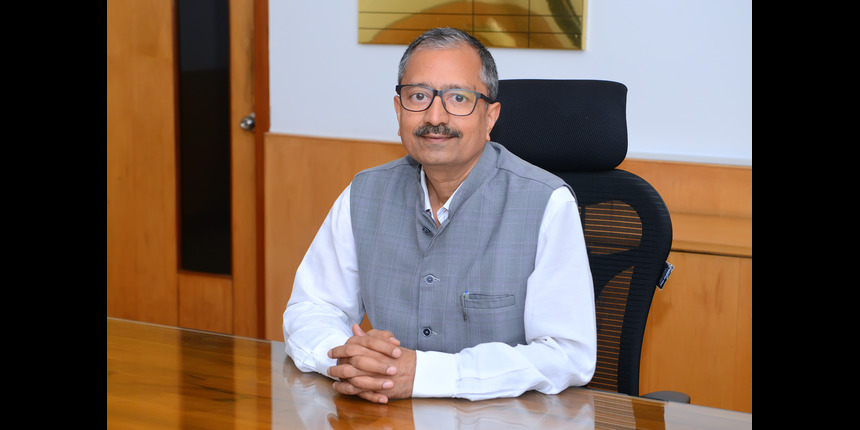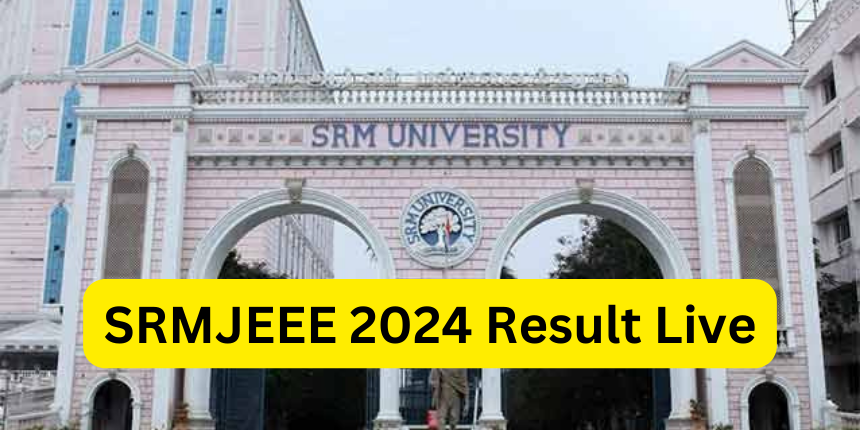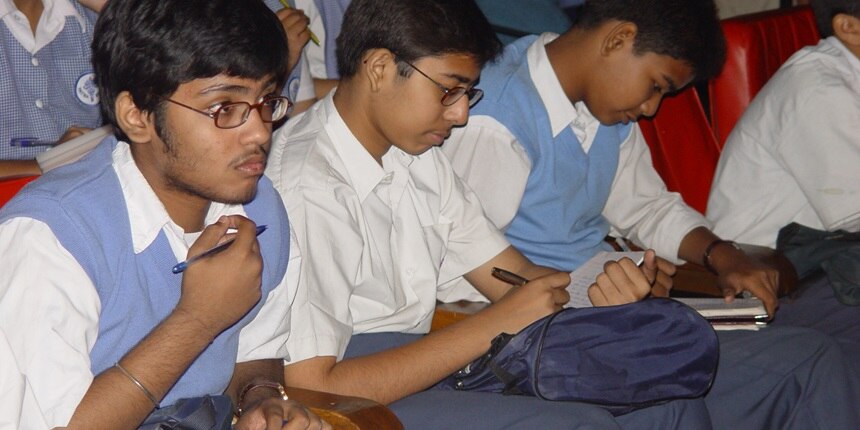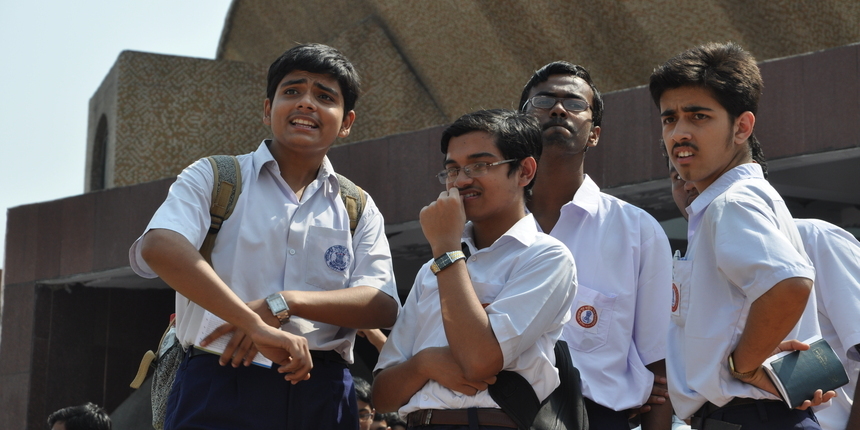‘Need a non-IIT, non-metro model of public technical institute’: NIT Surathkal director
NIT Karnataka Surathkal is launching courses on technology management and redesigning the BTech curriculum to encourage entrepreneurship, innovation.
 B Ravi, Director, NIT K Surathkal
B Ravi, Director, NIT K SurathkalSheena Sachdeva | April 15, 2024 | 05:48 PM IST
NEW DELHI: Last June, after 30 years at Indian Institute of Technology (IIT) Bombay, B Ravi took charge of National Institute of Technology Karnataka (NITK), Surathkal, as its director. He has many plans for NITK. He aims to work on raising students’ entrepreneurial and innovation skills, reform the curriculum, launch a new technology management programme and more. He spoke to Careers360. Edited excerpts.
Q. After spending over 30 years at IIT Bombay, what prompted you to join NIT Karnataka Surathkal as director?
By many counts, IIT Bombay is the leading technical institute in India, and allowed me to explore multiple domains, including manufacturing, medical devices and management or entrepreneurship. Before joining IIT-B, I did my masters and PhD at Indian Institute of Science (IISc) Bangalore, the top research institute in India, and before that, I did my Bachelors in Mechanical Engineering at NIT Rourkela, still among the top NITs. These three institutes provided solid capability and confidence in engineering, research and technology.
However, the majority of engineering colleges in India are struggling to navigate the turbulent waters of rapid changes – technological, social, economical, environmental and geopolitical.
There is a need to create a non-IIT and non-metro model of public technical institute that can inspire and show the way to many others. NIT Karnataka, Surathkal, seemed to be a good choice for this experiment.
Q. What interventions have you made after taking charge of NIT Surathkal?
The first step was to visit every hostel, department and campus facility. I held open-house discussions with faculty, staff, students and alumni. They helped in evolving the vision of transforming NITK into a model institute with global excellence and local relevance and led to the call for “Mission NITK – Good to Great”. We plan to achieve this by connecting research, education, innovation and entrepreneurship in a golden spiral.
We will encourage deep-tech startups leading to high-value jobs and socio-economic impact. For this purpose, we have recently drafted an institute-wide policy on innovation, licensing and startups, and setting up an Invention Factory.
Q. How different do you find the NITs to be from the IITs?
NITs have evolved from the erstwhile Regional Engineering Colleges (RECs). Different people were involved in creating the syllabus, teaching the class, setting the exam paper, and evaluating the answer books. This forced teachers and students to refer to multiple textbooks and learn the subject well. It is not surprising that NIT students are preferred by engineering and technology companies even today. In contrast, IIT faculty have near-complete control over all the above-mentioned aspects, and can teach what they feel is more important, usually aligned with their own research work. This allows students more time in extra-curricular activities, making them suitable for jobs related to consulting and management. Thus, NITians and IITians have distinct and equally-important roles.
Q. What are some of the broad changes you have made? Were there challenges?
My first priority was the recruitment and promotion of faculty and staff members, which were pending for many years. After that, many senior faculty were invited to contribute to administration.
We encouraged diversity and inclusion in recruitment as well as appointment of department heads, deans, and associate deans. Now, four out of 14 departments have women as heads.
We are trying to replace ad-hoc decision-making and processes with transparent policies and standard operating procedures (SOPs). This will greatly strengthen the foundation of NITK. Such changes are challenging, so we encourage discussions and dissent, but finally, coming together for decision-making and implementation. Patience is the key.
Q. Considering the slump in engineering placements across top institutes, how are the placements at NITK? What steps are you taking to help students?
The placements have been slower than usual and we are taking several measures to accelerate them. We organised a meeting with a delegation of US university representatives for NITK students interested in higher studies. Special training programmes were organised and the alumni were asked to open up their companies and connections. For students interested in startup incubation, we are enhancing the necessary ecosystem, and will be allowing deferred placement.
Q. What new courses have been launched or are in the pipeline?
Addition of new courses and modification of the syllabus of existing courses is a regular process at NITK. There is a possibility of creating a Department of Entrepreneurship and Management, which could offer a minor programme in entrepreneurship as well as a masters programme in technology management – both very much needed today.
Q. Over the last two years, NIT Karnataka Surathkal has slipped from the 10th to the 12th position on the National Institutional Ranking Framework’s (NIRF) ranking. What is your response?
NITK still ranks higher than many (new) IITs. In general, ranking has become a race to increase the numbers, such as papers published and patents filed. These are important for new institutes to motivate their faculty and gain wider recognition and, in turn, for attracting good students and placing them well.
However, well-established IITs and NITs should also focus on the quality of their output against global benchmarks as well as local socio-economic impact.
In other words, ranking should be an outcome of doing the right things, not doing certain things to only improve the ranking.
Q. There have been many teaching vacancies in all major institutes, including NITs. What has been done on this front?
We have recently recruited about 25 new faculty members and around 90 staff members. Please note that they need to be provided office space, campus housing and other facilities. Most institutes are several decades old and are already stretched to their limits. To construct new infrastructure, we need to take loans (from HEFA) and pay back from internal revenue generation. This implies increasing the student fees, among other measures. Hence, filling the vacancies has to go in parallel with creating or augmenting the infrastructure.
Q. How are you ensuring there is demand for both core and non-core courses?
The demand for any course depends on the perceived placements. Parents are admitting their wards to ‘circuit’ branches (computer science, electrical engineering, electronics and communication engineering) in lower ranked colleges, rather than ‘core’ branches (mechanical, civil, chemical, etc.) in higher-ranked colleges. However, generative artificial intelligence (AI) will replace entry-level programmers. The way forward is for circuit branches to focus on application sectors, and for core branches to embrace AI.
Inter-disciplinary areas (such as e-vehicles, energy and environment) offer good opportunities for research, innovation and entrepreneurship. Faculty and students need to connect with the society, identify unmet needs, develop novel solutions, and translate into marketable products. The necessary mindset and skill-set could be developed by introducing different types of activities through student clubs – physical, cultural, technical, speaking and business. These could be woven into the curriculum, in line with the National Education Policy (NEP) 2020.
Also read Part-time BTech for working professionals yet to find its audience
Q. Engineering students often don't get the freedom to opt for a career of their choice. Do you create the opportunity for them to explore?
We would like to free up the last semester for students to focus on a specific activity in line with their career aspirations. Students who wish to pursue higher studies can work on research and development projects and receive honours degrees. Students who would like to pursue MBA or work in a different field, can take minor course. Regular job-seekers can opt for internships. Students interested in entrepreneurship can prepare business plans and incubate their startups.
Q. How is NIT Surathkal’s Science and Technology Entrepreneurs Park (STEP) doing?
NITK STEP is one of the oldest incubators in the country and has been home to over 80 startups so far. Many of them have done very well, such as BHIVE, Delhivery, DriveU, Edugorilla, Krazybee, Meritnation, Nestaway, Pinkvilla, Practo, Robosoft, Simplilearn, Taxi-for-Sure, Travelyaari and Zwayam, creating many jobs and market impact. The STEP is financially self-sustaining, but needs to expand to cater to the growing demand from aspiring student entrepreneurs.
Also read 25 new BTech, other engineering courses at IITs, NITs, CFTIs: A list
Q. How do you marshall alumni support?
NITK has over 35,000 alumni – many of them in Bengaluru and the Bay Area in the USA, and the rest spread all over India and abroad. I had an opportunity to address the alumni during the Global Convention in Washington, DC (in virtual mode), and during the NITKonnect event in Bengaluru, both very well-attended. In addition, I interacted with the alumni batches of 1998, 2001 and 2003, who came to the campus in December 2023 for reunion meetings. More and more alumni are returning to the campus, reconnecting with their teachers, reliving their college days, and redefining their relationship with their alma-mater. We are putting several initiatives in place to involve them in updating the curriculum, inspiring our students, collaborating in R&D projects, and enhancing the infrastructure.
Follow us for the latest education news on colleges and universities, admission, courses, exams, research, education policies, study abroad and more..
To get in touch, write to us at news@careers360.com.




